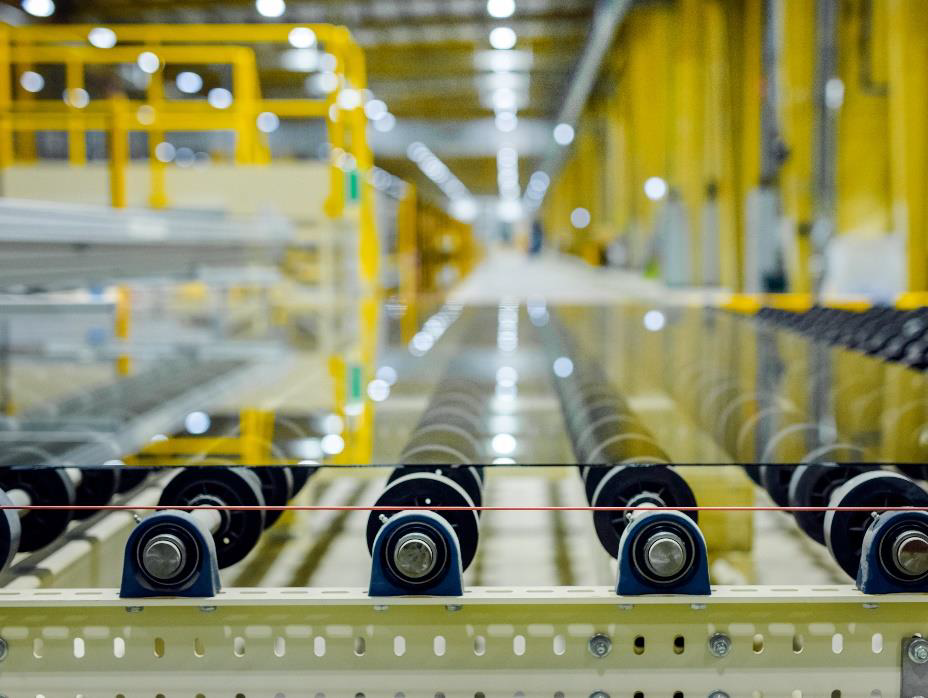Following successful pilot production runs, Guardian Glass is introducing a lower-carbon float glass to the European market. The new lower-carbon float glass, Guardian Nexa™, can also be used as a base glass or laminated glass for Guardian high performance products, including the Guardian SunGuard™ and the Guardian ClimaGuard™ ranges of coated glass products.

Image Credit: Guardian Glass, LLC, GRDPR204
Gardian Nexa glass, developed through research and development, technical innovation and manufacturing expertise, can be used in a wide range of building facade applications and will help to reduce the embodied carbon of the built environment. When compared to our standard float glass production, the benefits of Guardian Nexa glass include:
- Reduced embodied carbon by more than 30% to approximately 7.0 kg CO2e/m2 for 4mm float glass*
- Higher cullet content – from both internal and external sources
- No compromise on performance and aesthetics, similar to Guardian ExtraClear™ float glass
* The embodied carbon reduction has been calculated comparing the estimated value for 4 mm Guardian Nexa glass, and the value for 4 mm Guardian ExtraClear glass produced in Europe. The embodied carbon data is the CO2 equivalent in kg per square meter of glass (CO2 eq.), emitted during the glass production (A1-A3), and was calculated using a standard 4 mm thickness, not the actual glass thickness. The calculation is an estimation based on the material’s Embodied Carbon Factor (ECF) derived from the Regional EPD, third-party, independently verified document that communicates transparent information about the lifecycle environmental impacts of a product. The A1 – A3 stages include the environmental impacts from the raw materials extraction and processing stage, raw materials transportation to the manufacturing site, and the manufacturing of the product.
Environmental Stewardship
At Guardian Glass, we strive to improve both the environmental performance and effectiveness of our manufacturing processes and of our products, while consuming fewer resources. This involves considering each stage of the process, including the sourcing of raw materials and the efficiency of our furnaces. Taking this approach has enabled us to achieve the results that we have with Guardian Nexa.
Guus Boekhoudt, Guardian Glass Executive Vice President commented: "This is a significant accomplishment by our R&D and operations teams, achieved through a combination of ongoing innovation in manufacturing processes and the optimization of cullet use. It reflects our dedication to our Environmental Stewardship priorities, including improving energy efficiency and air emissions, and managing resources responsibly."
Environmental Product Declaration Availability
Detailed environmental data on Guardian Nexa will be documented through an Environmental Product Declaration (EPD). This is currently under development and is expected to be available in Q2 2024. Since 2021, the scope of the EPDs for Guardian Glass products in Europe has been widened to consider CO2 emissions generated from production processes, increasing the level of transparency provided to customers.